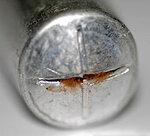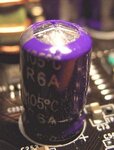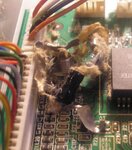boylesg
Advanced Member level 4
- Joined
- Jul 15, 2012
- Messages
- 1,023
- Helped
- 5
- Reputation
- 10
- Reaction score
- 6
- Trophy points
- 1,318
- Location
- Epping, Victoria, Australia
- Activity points
- 11,697
What happens to them if their voltage limit is exceeded by a small amount over a period of time?
Do they buldge as they do when you apply a reverse voltage?
Do they buldge as they do when you apply a reverse voltage?



